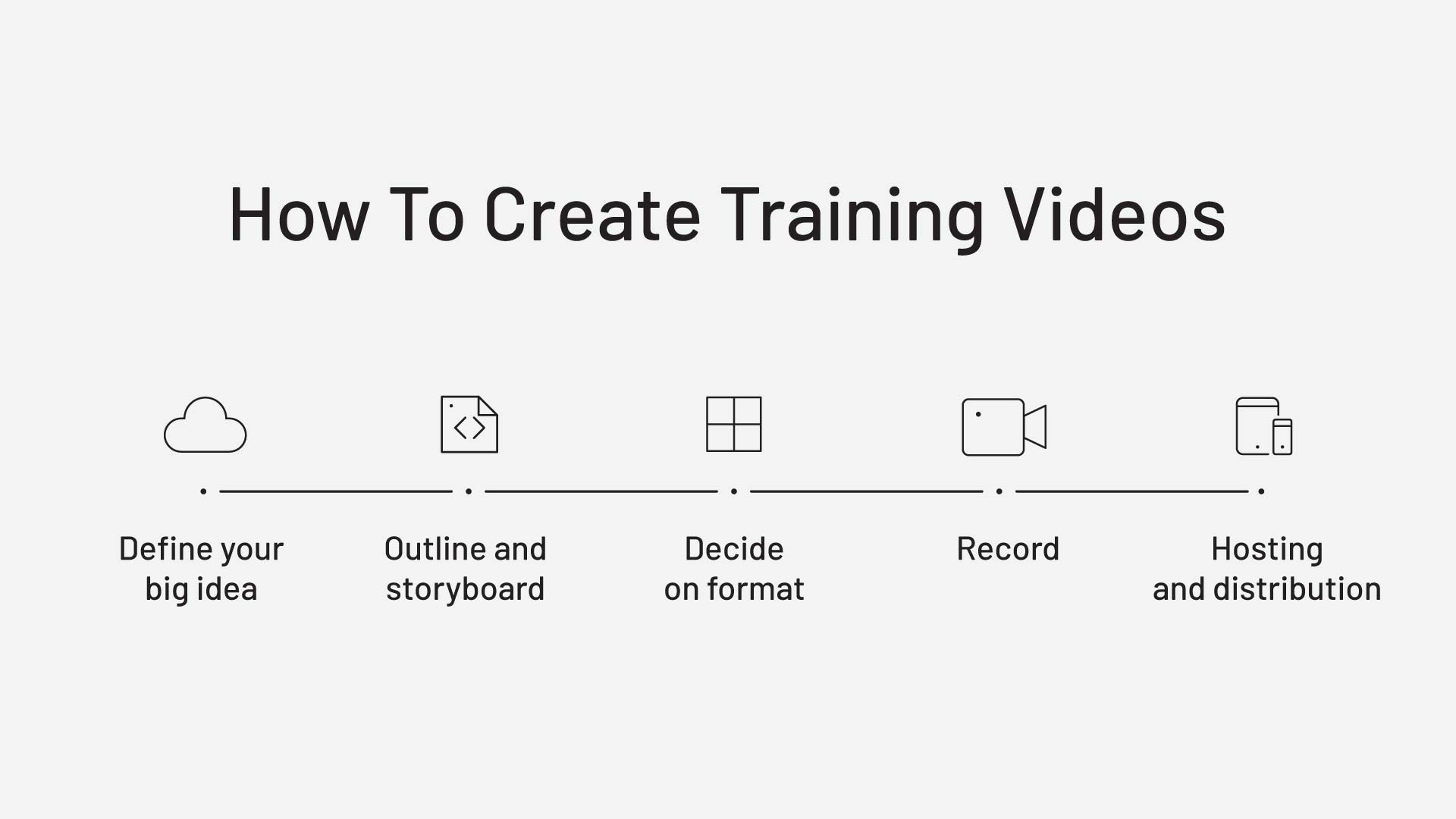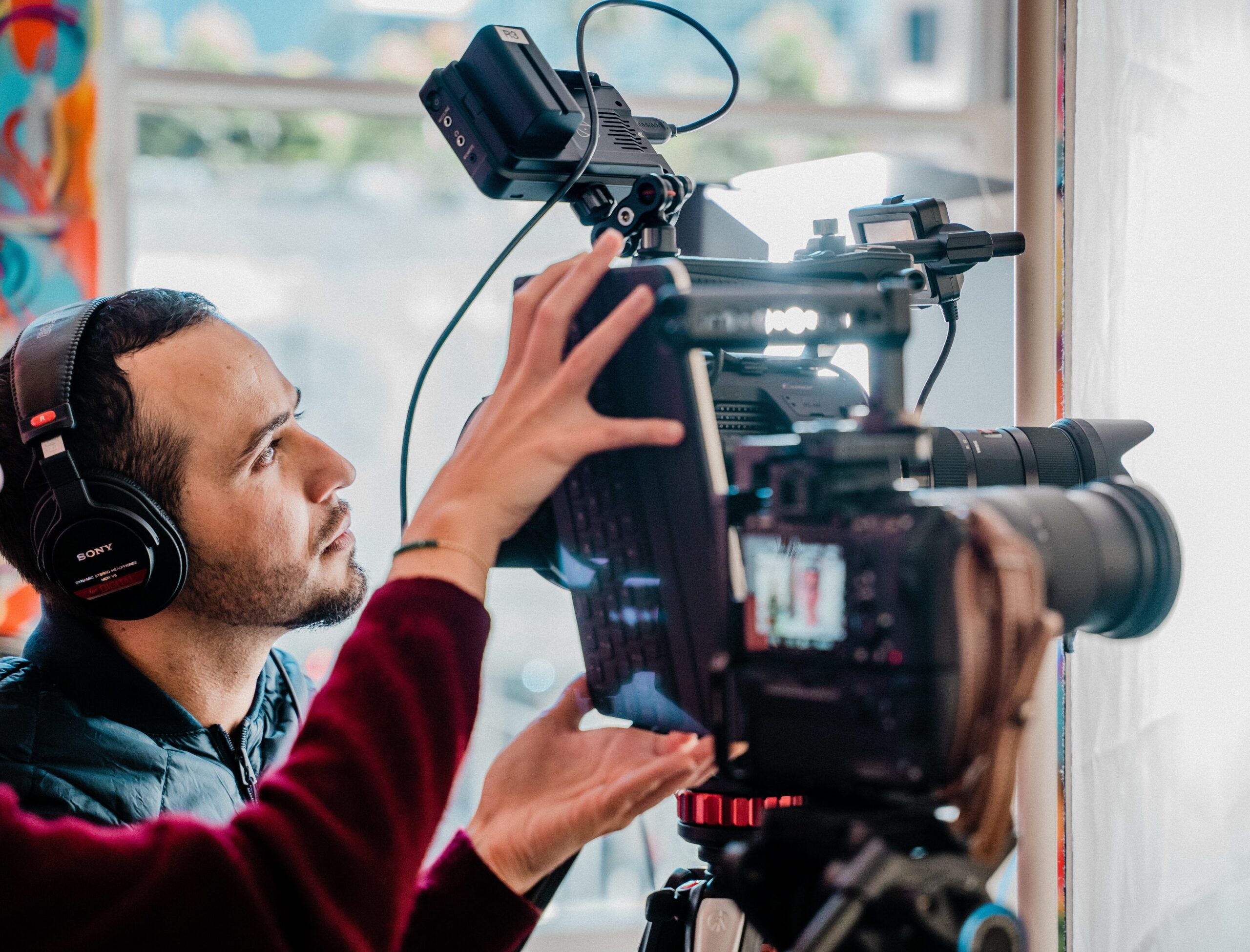In this post, my goal is to teach you how to create training videos for your coaching programs and online courses. We will cover:
- What is a training video?
- Where would you actually use these?
- When are they beneficial?
- How to actually create effective videos and then wrap up with some recording hosting and distribution tips.
Many of you watching are in various industries and different niches, of course, but this is helpful for almost anyone. Whether you are a coach, a course creator, you create digital products, or maybe you’re a corporate trainer or do corporate consulting. There is always a need to create training videos. Even if you aren’t doing B2C, you may need to create training videos for your employees or for your team. I know when I started hiring, training videos were a huge component of my onboarding process, helping people know how to actually do their job.
What is a training video?
A training video is a video that explains a concept to someone. It gives them an idea of how to incorporate the concept, and then you give them steps and a plan of action to follow post-video.
Sometimes I find that people will simply create a training video that explains at a high level what something means, to take some of the vagueness out of it, and then they create a workbook to give action steps. But I find that there’s often a disconnect between the training video and the workbook. Someone may have watched your training video, nodded their head the entire time, and said, “Oh yeah, this makes a lot of sense.” But then when they open their workbook they wonder, “what is this? This does not look like what I saw.” That’s why I recommend giving steps or a plan of action in your video. I’ll give you an example:
In my group coaching program, I have a video about how I launched my business. I call it the launch process, and it teaches coaches how to launch their services online. Even though in that video, I give them that high level, 3000-foot view of “here’s what the customer’s thinking, here’s what you’re probably thinking, here’s the customer journey, and here are all of these different things,” I still take them through the actual step by step of implementation. I still tell them, “here’s how long your live stream launch will last, here’s how many videos, and what you should cover.”
The workbook gives you space to build these things out, to help with advancing understanding. I’ve noticed that as I’ve incorporated more of the implementation pieces into my training videos, it’s actually helped reduce a lot of the questions that come from certain modules.
Where would you use a training video?
Any time you’re trying to disseminate information, it will be excellent if you can incorporate a training video. If you’re new to this and feel you’re not at a point where you want to create training videos, maybe you could create a training video on just how to navigate your program.
Related: Register now to catch the replay of Kyshira’s session from Think In Color 2020
Why are training videos beneficial?
One reason why I really like training videos is that you’re able to tackle people’s various learning styles. You’re able to not only show your face, but you can have visuals, slides, and animations; and you can also get those videos transcribed and provide the written version. You can really accommodate how everyone learns; some people need to see things on paper and highlight, others need to hear, and others need to see. Training videos allow you to kill all of those birds with literally one stone.
Another thing I’ve found over the years of creating training videos is that honestly, they’re timeless. It’s easy to go in and cut out different parts or add new stuff in, rather than to create something brand new from scratch.
You’re also able to disseminate videos quickly. When I was doing a speaking engagement for an incubator, for some reason the wifi cut out the last five minutes of the presentation and I wasn’t able to finish up my LinkedIn portion. Luckily, I already had a whole hour-long training video on LinkedIn that I was able to give that organization to make up for those five minutes. I didn’t have to create any extra work, and I didn’t have to go and film anything; I already had this training video available.
I’ve also found in my private coaching programs that I’ve been able to repurpose videos to create a resource library for my private clients. This became my way of having a FAQ center: instead of it being actual questions with paragraph responses, it was categorized with topics and training videos underneath to help people understand the answers to those questions.
How to create an effective training video
In terms of how to create an effective training video, there are a couple of steps.

Define your big idea
The first step is, how do you decide what to teach? With this, you really want to think through the objective of your video. What problem are you looking to solve with this video, and do you need multiple videos? I’ve found that people prefer multiple shorter videos over really long ones, so I prefer the bite-sized appetizer approach versus the long form, eight-course meal approach.
Get really specific about what your training videos will cover. Try to avoid very generic, big picture topics; and instead, really drill down. You may find that if you want to create a training video on how to create a course, that video is going to last forever; instead, maybe you have a six-part series on how to create a course, with bite-size 10-15 minute videos.
Outline and storyboard
The next step is to create an outline. Storyboards are a helpful way to do this. I outline all of my videos – not just training, but also my live streams. It’s really just building out a very simple step-by-step process of how I plan to accomplish my objective: if my goal in this video is to help someone learn how to create an Instagram account for the first time, what are the exact steps they need to follow to do that?
When it comes to training videos in particular, you want to ensure you’re not making any assumptions and you’re not skipping steps. For example, you could assume that someone knows to click the edit button on their profile to change their profile picture. You’re making that assumption, and so you don’t cover it – but then you might end up with a ton of questions asking, “how do I update my profile photo?” Make sure to give people everything that they need to accomplish that objective. We don’t want them to have to guess and read between the lines.
Related: How To Create A Storyboard (Plus Templates)
Determine your format
There are a number of video formats you can use with training videos:
- The first is the talking head format, where all you see is the speaker’s, and there are no visuals to go along with it.
- If you’re teaching something a little bit more complex, where there’s a framework or step-by-step process with the need to see graphics and arrows and things to fully understand it, you can use voiceover slides.
- If you are teaching something that’s a little bit more hands-on, there’s also screen recording. I post screen-recorded videos of me setting up different software in real-time, or how to create a convert kit account or a landing page. I find for hands-on learners, they like seeing screen recordings of a step-by-step process.
Let’s cover a couple of tips and tricks for keeping the video interesting.
- Keep things concise. I find that if I’m concise and direct them to the point, it keeps my videos interesting.
- Spice up your graphics. If you have really captivating imagery on your slides, or having your logo and some graphics along the bottom of your talking head video, those types of things really help you.
- Use real-world examples. Don’t spend your entire training video speaking at a hypothetical high level. Real-world examples and case studies definitely help with keeping things interesting and getting to your audience to engage.
Time to record
I feel like I record videos every week, but here are my top recording tips for you:
- Sound. Be very cautious of your surroundings in terms of sound. In my office, there is construction next door, or sometimes when I’m at home, there is a lawn mower outside – you want to be very conscious of sounds, because you want people to have a crisp, clear audio experience. Make sure you have some kind of external microphone – in the past, I had to throw out some of my training videos because the audio was really low, as I wasn’t using a good mic or any microphone at that point in time. You should have a really good external microphone.
- Background. Be conscious of your background. Make sure your backgrounds are free of clutter.
- Lighting. Always check that you have really good lighting, and there are no shadows awkwardly behind you.
Related: How To Set Up A DIY Home Video Recording Studio For Cheap
Hosting and distribution
So, where should you host your videos once they’re done?
I recommend using something like Vimeo to host your videos. Vimeo tends to be a little bit more secure than YouTube, as I find that even unlisted videos could still get shared through YouTube. I only use YouTube for videos that I want to share publicly.
If you’re using a course hosting platform, like Thinkific, you can actually store your videos there. However, I still recommend backing up your videos to something like Vimeo or to an external hard drive, just in case something happens – if you have five years’ worth of content, you definitely don’t want to lose it!
In terms of distributing your videos, I highly recommend you use a course portal to do so. Even if you’re not creating a typical e-courses – if you’re creating training centers for your clients or employees – you want to create a central place for them to go to access those replays of the training, your providers, and they definitely look into a course platform like Thinkific.
One other benefit of using a course platform like Thinkific for distributing your training videos is that you have the ability to give your videos a title, add text, and to add quizzes and assignment PDFs. You can really think through what kind of complementary material will help your audience understand and implement what it is you’re teaching. Play around with the platform features to see what else makes sense for you to incorporate with your videos.
I hope you found this helpful!
If you missed out on Think In Color this year, we’ve got you covered! You can still register for free to access replays from every session, and receive early notification for next year’s summit.
Kyshira Moffett is an award-winning serial entrepreneur, brand strategist, and author. In January 2017 she launched The Power Collective to provide coaching and consulting services to women entrepreneurs, helping them package their expertise, brand their influence, and monetize their online presence.
At Think In Color 2020 – a virtual summit designed to amplify the voices of Women of Color and build connections between a diverse community of entrepreneurs – Kyshira delivered a dynamic session about building content that converts. In the following blog post, we asked her to return and share insights from her experience in creating training videos.





